The Mexico City altitude is indeed one of its most distinctive geographical aspects. It is more than 2,000 meters above sea level in the Mexican Valley. The Mexican capital is considerably high. This location, surrounded by mountains, gives CDMX unique characteristics that every visitor should know.
Discover the main facts and figures about Mexico City’s elevation. Learn how elevation affects residents and tourists not accustomed to high altitudes. Mexico City is a city of contrasts that will undoubtedly surprise you.
Mexico City altitude: Geographic setting
Mexico City is located in the Valley of Mexico, an endorheic basin in central Mexico, surrounded by the Neovolcanic Mountain Range. This region is home to towering volcanoes and mountains exceeding 5,000 meters (16,400 feet) in height, contributing to the city’s distinctive topography.
At an altitude of approximately 2,240 meters (7,350 feet) above sea level, Mexico City ranks among the highest capital cities in the world. It is surpassed only by La Paz, Bolivia, Quito, Ecuador, and Addis Ababa, Ethiopia among major global cities. This elevation influences the city’s climate, air density, and even physical performance for visitors and residents.
The high altitude is a result of the city’s geological history. Millions of years ago, the region was a vast lake system formed by tectonic activity and subsidence within the North American Plate. Today, modern-day Mexico City stands on what was once the lakebed, which has shaped both its infrastructure and environmental challenges.
Within the city, elevation levels vary significantly. The highest point is Ajusco, a dormant volcano reaching 3,930 meters (12,894 feet), offering panoramic views and popular hiking trails. In contrast, the lowest area lies in the western central district, where the altitude drops slightly to 2,230 meters (7,316 feet).
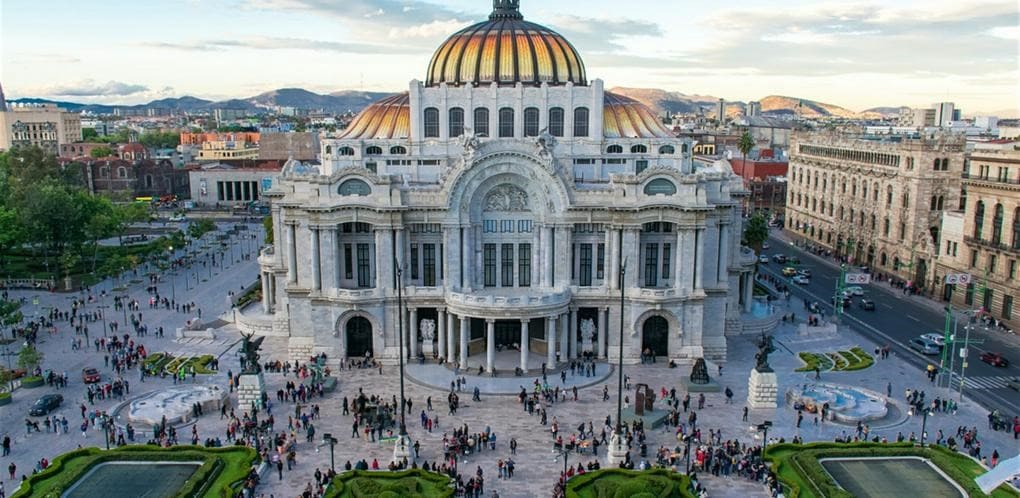
The average altitude of Mexico City
Mexico City’s average altitude is 2,240 meters, which places it among the highest on the planet. Only some capital cities in South America are at a higher altitude, such as La Paz, Bolivia (3,640 meters above sea level), Quito, Ecuador (2,850 meters above sea level), and Bogotá, Colombia (2,625 meters above sea level).
At the level of the American continent, CDMX also exceeds the average altitude of cities such as Denver in the United States (1,609 meters above sea level) or Guatemala City, Guatemala (1,500 meters above sea level). On a global level, it is above Asian capitals such as Kathmandu, Nepal (1,400 meters above sea level) or Damascus, Syria (680 meters above sea level).
Not all of Mexico City is precisely at 2,240 meters above sea level. There are essential variations between the diverse municipalities and areas.
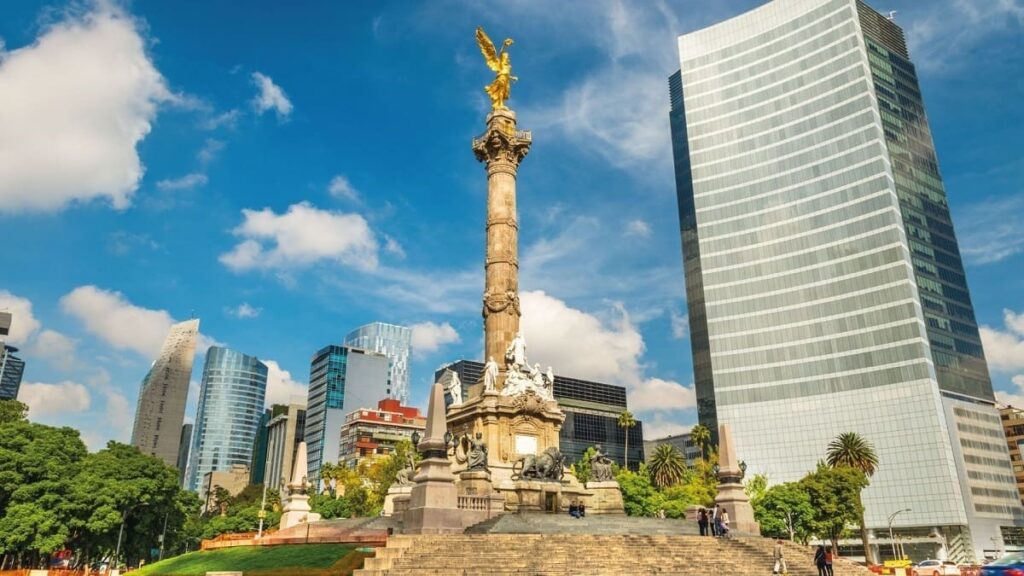
Mexico City altitude: Maximum and Minimum
As mentioned above, the highest point within the limits of Mexico City is Ajusco, which reaches 3,930 meters above sea level (masl). This hill is southwest of the capital, in the Cumbres del Ajusco National Park.
On the other hand, the area with the lowest altitude is some hills in the west center of the city. This region has elevations ranging from 2,230 to 2,300 meters above sea level. Other low areas of CDMX are around the Mexico City International Airport, which is approximately 2,230 meters above sea level.
The southwest of the capital also registers low altitudes, such as in the Magdalena Contreras mayor’s office, which is about 2,300 meters above sea level.
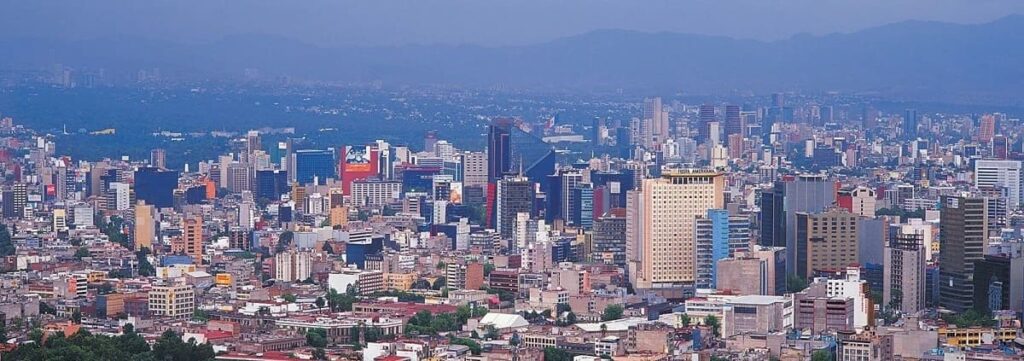
Mexico City altitude in feet
The Mexico City altitude in feet is approximately 7,349 feet above sea level. It is calculated by converting the average height of 2,240 meters to feet since 1 meter equals 3,281 feet.
The highest point, Ajusco, reaches 12,893 feet high. In contrast, the lowest area is between 7,316 and 7,546 feet above sea level. To give you an idea, the altitude of CDMX in feet is higher than in American cities like Denver (5,278 feet) or Aspen (7,908 feet).
It resembles Appalachian Mountain towns like Boone, North Carolina (3,330 feet). Visiting a city at more than 7,000 feet in elevation can be challenging for tourists not accustomed to high altitudes. Therefore, it is vital to take precautions and acclimatize slowly.
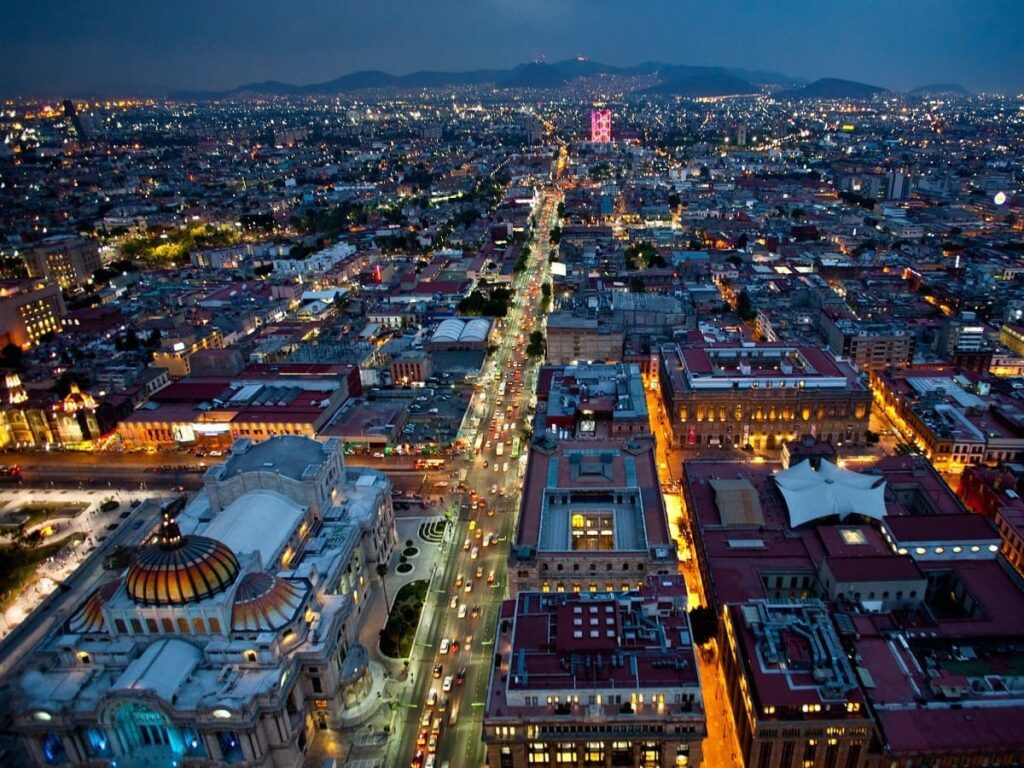
Mexico City Elevations compared to other cities – UPDATED 2025
| City | Country | Elevation in Meters | Elevation in Feet |
|---|---|---|---|
| Mexico City | Mexico | 2250 | 7382 |
| Quito | Ecuador | 2850 | 9350 |
| Nairobi | Kenya | 1795 | 5889 |
| Bogotá | Colombia | 2640 | 8661 |
| Denver | USA | 1609 | 5280 |
Mexico City altitude: Main delegations and municipalities
Mexico City comprises various mayors and municipalities that vary in altitude. While the western and southern areas are at a higher elevation, those in the east and north tend to be lower due to their proximity to the old lake.
- Cuajimalpa de Morelos: 2,623 meters above sea level
- Álvaro Obregón: 2,373 meters above sea level
- Tlalpan: 2,294 meters above sea level
- Coyoacán: 2,256 meters above sea level
- Benito Juárez: 2,242 meters above sea level
- Cuauhtémoc: 2,240 meters above sea level
As you can see, the variation in altitude between the municipalities is approximately 300 meters. However, in general, all of Mexico City is considered high altitude.
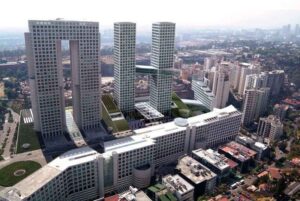
Effects of the Altitude of Mexico City on Visitors
Mexico City’s altitude can affect visitors unfamiliar with high elevations. It is because, at higher altitudes, atmospheric pressure and the amount of oxygen decrease. Let’s see some of its effects:
- Shortness of breath. Feeling short when doing physical activities is usually due to the lower availability of oxygen.
- Tiredness. The body must work harder to oxygenate itself, which can cause fatigue and exhaustion.
- Headaches are common when reaching very high altitudes since the cerebral blood vessels dilate.
- Sleep problems. Because oxygen levels decrease while sleeping, this can affect the quality of your sleep.
- Altitude sickness. This illness may occur in severe cases of intense headache, nausea, vomiting, and dizziness due to lack of oxygen.
Most effects are mild and manageable with a reasonable acclimatization period. The recommended measures for trips at altitude should also be taken. The most important things are to ascend gradually and be well-hydrated.
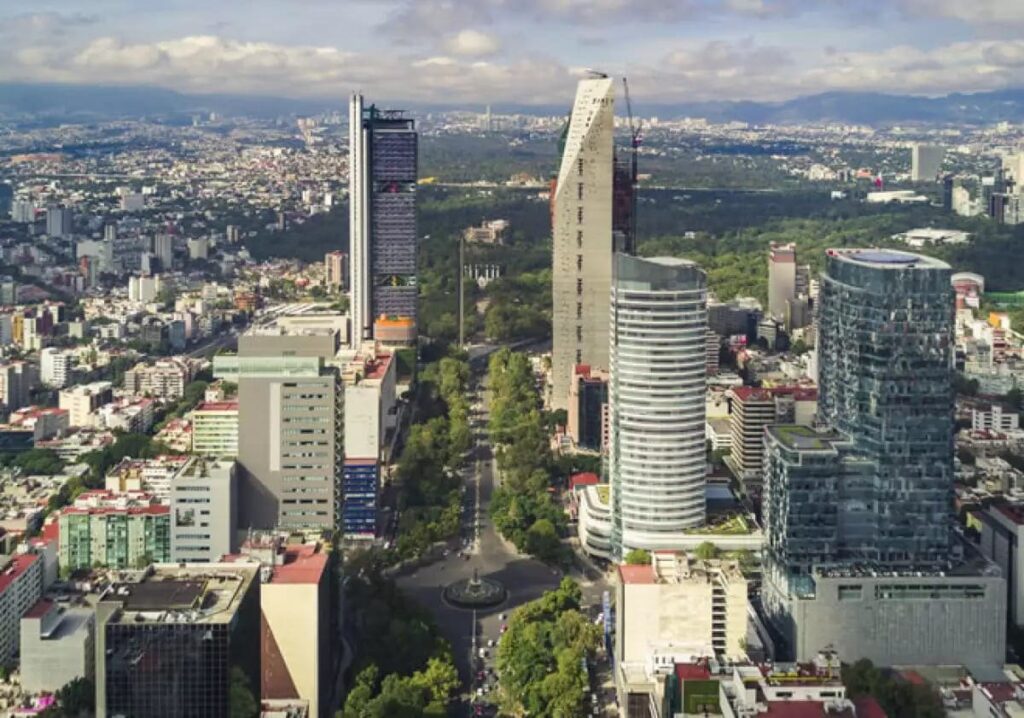
Mexico City altitude: Recommendations for travelers
Here are some recommendations for travelers visiting Mexico City or other high-altitude places:
- Hydrate well before, during, and after the trip. Water helps the blood carry more oxygen.
- Avoid alcohol and caffeine that cause dehydration. Prefer fruit juices, mate, tea, or soups.
- Perform moderate physical activities. Do not demand too much from the body the first few days.
- Do not smoke; this makes the blood’s oxygenation difficult.
- Eat foods rich in antioxidants, such as fruits and vegetables, that help the body adapt.
- Sleep with your head slightly elevated to improve breathing.
- Wear comfortable clothing and shoes that keep you warm without overheating your body.
- Take bronchodilators if you suffer from respiratory diseases.
- Ascend gradually and do not make great efforts the first week. Give the body time to acclimatize.
Following these recommendations will make traveling to and visiting high-altitude places like the impressive Mexico City more bearable.
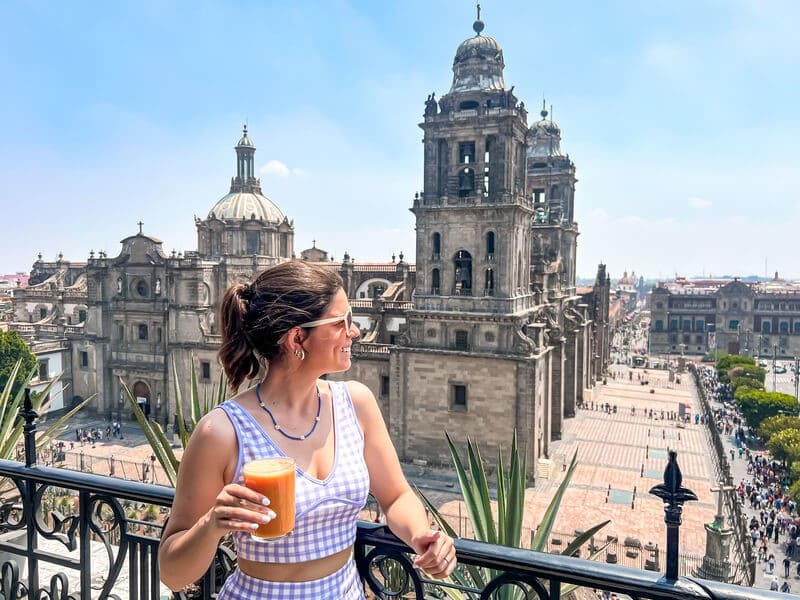
Mexico City altitude: Activities according to altitude
Here are some recommendations for activities in Mexico City according to altitude:
- Low areas (up to 2,300 meters above sea level): Ideal for taking quiet walking tours through the Historic Center, museums, and markets. You can also do moderate exercise.
- Intermediate zones (2,300 – 2,700 meters above sea level): Recommended for hiking, visiting parks, and sightseeing. Avoid running or walking quickly to avoid becoming too agitated.
- High areas (more than 2,700 meters above sea level) are perfect for short walks, tours in tourist transport, and panoramic visits. Avoid great physical effort.
- Very high points (more than 3,000 meters above sea level): It is best to limit yourself to appreciate the views by cable car or vehicle transport and not do hiking or strenuous walks.
In general, prioritize moderate, leisurely, and well-hydrated tourist activities during the first few days. This way, you allow acclimatization before making intense efforts. Adapting your activities in CDMX to the altitude and your physical conditions will make the experience more pleasant. Enjoy Mexico City at your own pace!
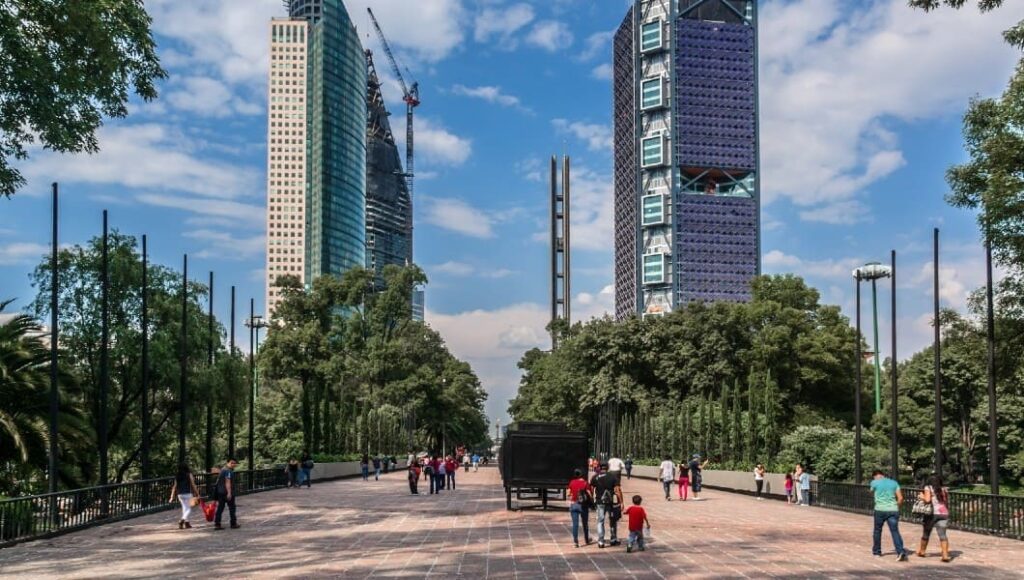
Admiring the grandeur of Mexico City from above
Mexico City’s high altitude, over 7,000 feet, poses unique challenges and benefits, significantly influencing its climate, culture, and lifestyle.
The altitude is undoubtedly one of the most unique characteristics of the imposing Mexico City. Walking through its streets, museums, markets, and archaeological sites allows us to connect with its cultural and historical wealth. But there is an even more impressive perspective to appreciate this high-elevation metropolis: admiring it from the sky.
Flying over CDMX in a helicopter is an unparalleled experience. It offers a unique view of the majesty of its buildings and avenues and the grandeur of the ancient lake on which it stands. You will see the mountain ranges surrounding it and every corner of this fascinating city. If you want to enjoy the best and most complete aerial views, México Helicopter is the ideal option.
We have modern aircraft and experienced pilots who will take you to discover a Mexico City you learned about. Take off with us and fall even more in love with this city of high altitudes and enormous charms. Live an unforgettable adventure!


 Arabic
Arabic Chinese (Simplified)
Chinese (Simplified) Dutch
Dutch French
French German
German Italian
Italian Portuguese
Portuguese Russian
Russian Spanish
Spanish